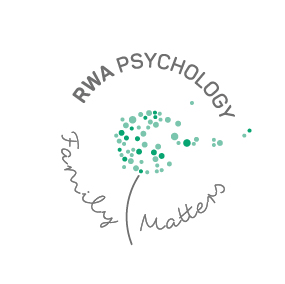Clients can enter therapy due to a relationship that is causing pain. Common phrases I hear clients say about these relationships are “I know he is not good for me but I just cannot not see him” or “we are at a good place now and she has apologised”. Sounds “toxic” right? For some, these relationships are so destructive that even friends and family will often echo the same. Some of these relationships are often described as an addiction, one where an individual may even be dependent on the emotional connection; the highs and lows it provides.
This is referred to as Trauma Bonding.
Bonding refers to how an individual becomes emotionally attached to another person. This happens gradually over time where trust is slowly built and earned.
The term trauma bonding however describes an intense, rapid attachment that is characterised by excitement and idealising. Trauma bonding occurs when periods of being devalued, rejected and even abused are interspersed with (sometimes fleeting) periods of being valued and cared for. This becomes the glue that binds a couple together. Trauma bonding can follow a pattern of a build-up of tension, an incident /s occurring, a reconciliation period followed by a period of calm. It can also include the misuse of fear and manipulation usually by one partner.
Why does trauma bonding occur?
Childhood trauma itself can lead to trauma bonding. Disruption to, and trauma in attachment bonds during infancy and childhood can set the foundation for toxic unhealthy relationships. At the core, childhood trauma impacts our interpersonal relationships, mental health and personality. Trauma can include emotional, sexual or physical neglect and/or abuse that creates a vulnerability to trauma bonding.
In his book The Body Keeps the Score, Bessel Van Der Kolk writes: “Being traumatized means continuing to organize your life as if the trauma were still going on—unchanged and immutable—as every new encounter or event is contaminated by the past.”
We know that even when parents/carers neglect or abuse infants/children, they continue to attach to their parent/carer. Put simply, when humans are in danger, we seek safety and attachment. So, when these healthy relationships and attachments are unavailable, this makes us more likely attach to unhealthy relationships. For some, toxic and unhealthy relationships also feels familiar or even comfortable and it is not until it becomes so destructive that the comfort experienced is no longer enough to remain in the bond.
For some, in a trauma bond an apology (i.e., attempt at restoration) coupled together with a sense of safety and calm strengthens the emotional dependency, even when the safety comes from the one who has triggered mistrust or disappointment. This can support the belief that this toxic unhealthy relationship is needed to survive, feel wanted or even safe.
Trauma bonding includes a cycle of being cared for, loved and valued followed by periods of devaluing and rejection. This cycle biological response in the body. So during highs in the relationship certain hormones are released creating extremely rewarding emotional responses that bond the attachment further. This creates intermittent (or sporadic) reinforcement or reward during these periods. This maintains the intoxicating nature of the bond. An emotional high that for some, can be difficult to experience elsewhere or even invalidating without.
What are some of the signs?
- For the most part, the relationship feels like an emotional rollercoaster. It is interspersed with periods of pain, tension, arguments or fighting. This is then followed by periods of calm and possibly pleasure.
- For one or even both parties in the relationship, a level of excitement or rush can be experienced during arguments or fights. While there is pain and suffering during this time, some describe a sense of familiarity and even comfort in this space
- Feeling as though you cannot leave despite knowing that trust is no longer possible; that the relationship is toxic and goes against values you want to live by
- When one or both partners justify the behaviours of selves or the other in the relationships.
- Using moments of calm to justify staying together. These moments can be amplified due to them being scarce and short lived.
- For some, the relationships may mimic or feel similar to a bond you had during childhood. This may have been with a parent/carer or significant person during childhood.
Getting Help and breaking free from a trauma bond
When individuals are stuck in a trauma bond, it is usually a result of unresolved early childhood trauma that has occurred. Identifying and understanding this process is the first step. Addressing the childhood trauma is a good place to start to heal from a trauma bond and to start to believe and feel that there are other choices possible for you. You are not alone in your trauma bond; it is a common place for individuals to be at when coming to therapy. Working with a psychologist to safely leave a trauma bond can help…
Van Der Kolk, B. (2015). The Body Keeps the Score: Brain, mind, and body in the healing of trauma. New York: Penguin Books
Carnes, P.J. (2019). The Betrayal Bond: Breaking Free of Exploitive Relationships. Health Communications Inc.

We've tailored the services at RWA Pyschology - Family Matters to all age groups from young children to adolescents and adults - and we have specialists in crisis, short/medium term counselling and longer term psychotherapy.
Call RWA psychology for an appointment with one of our psychologists.
